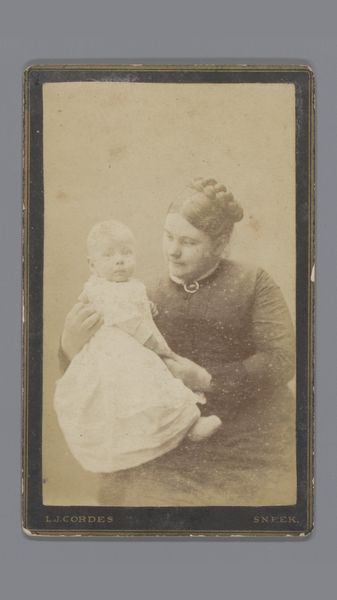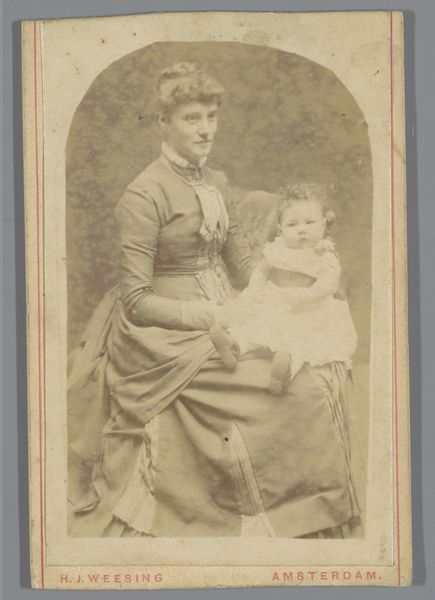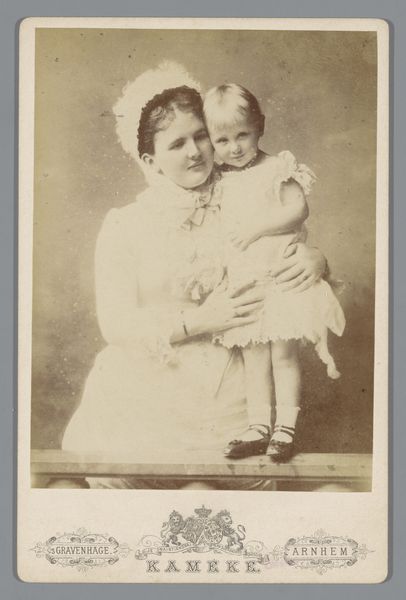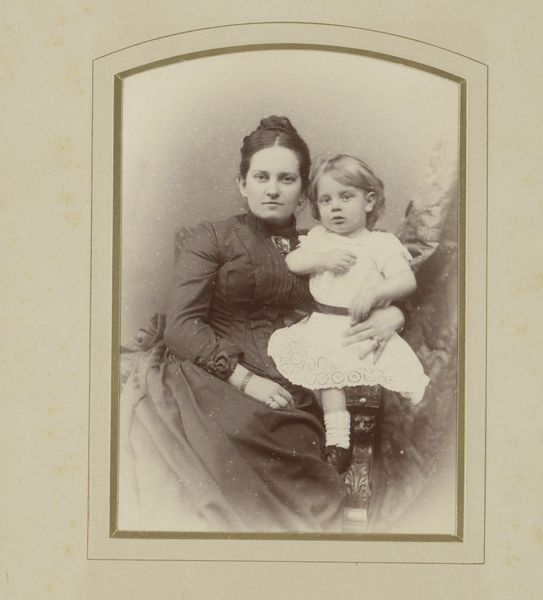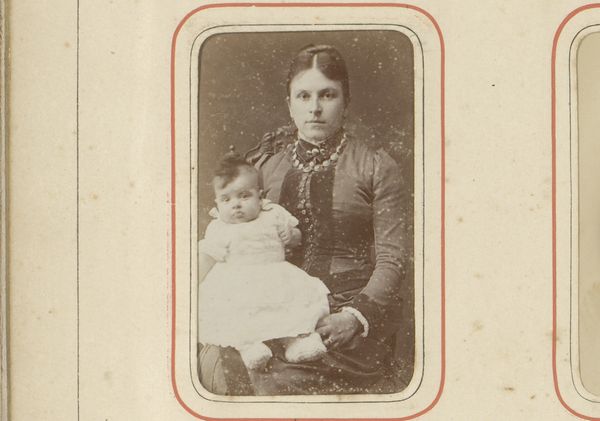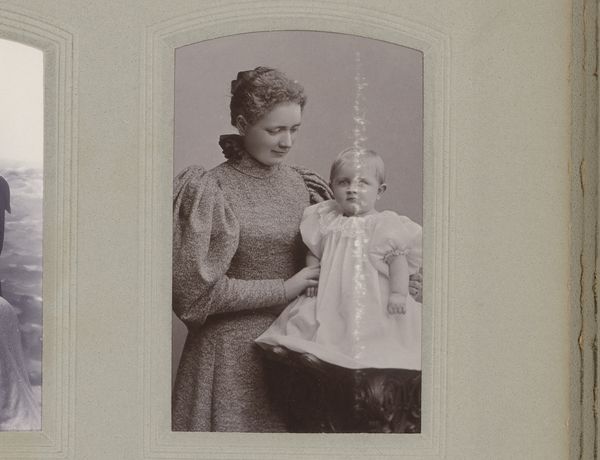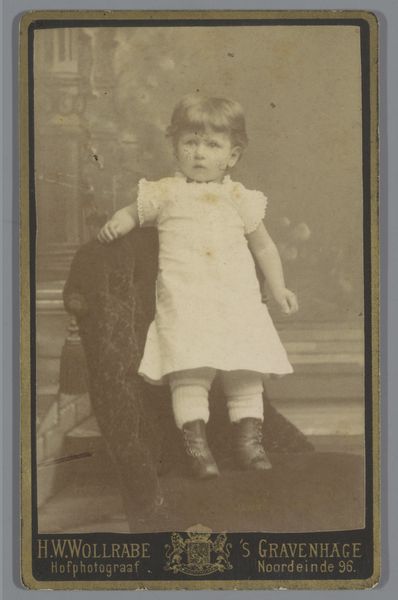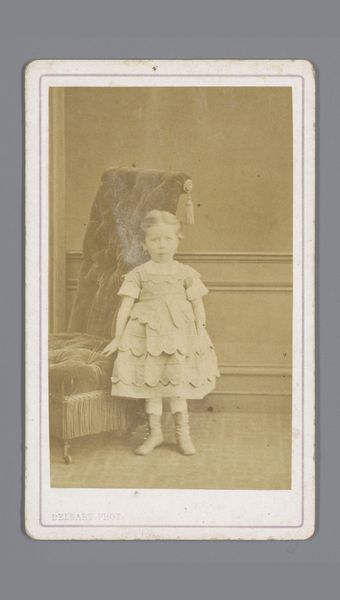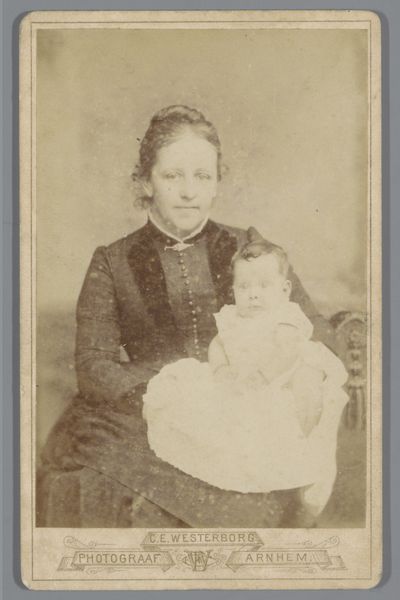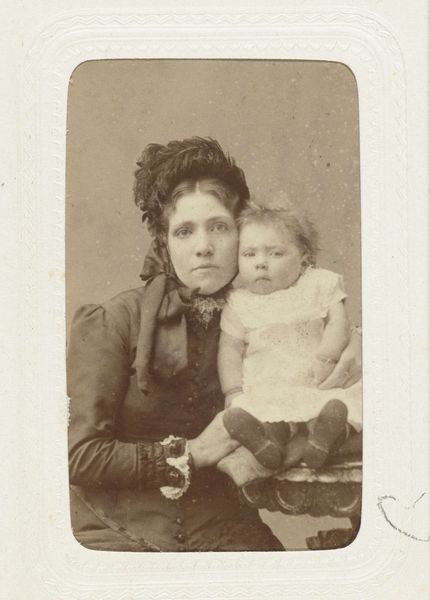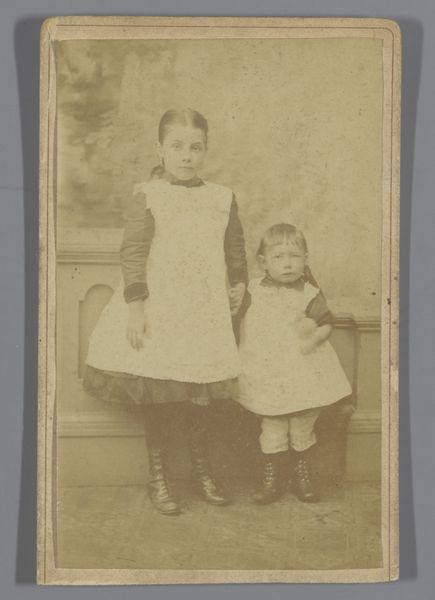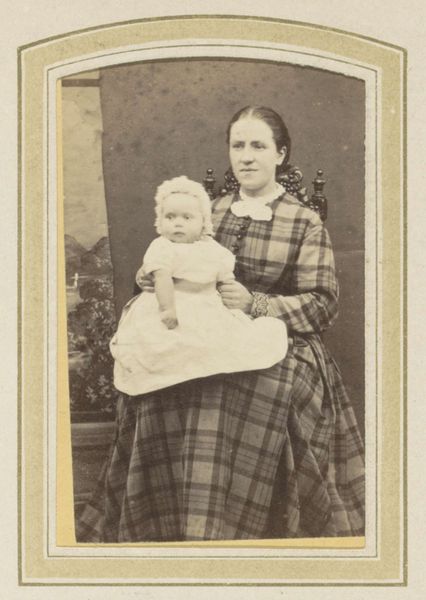
photography, gelatin-silver-print
#
portrait
#
still-life-photography
#
mother
#
photography
#
gelatin-silver-print
#
genre-painting
Dimensions: height 104 mm, width 62 mm
Copyright: Rijks Museum: Open Domain
Curator: This gelatin silver print, created by Charles Hideux between 1860 and 1875, is titled "Portrait of an Unknown Woman with Child." It now resides here at the Rijksmuseum. Editor: It's strikingly melancholy. The sepia tones enhance that feeling, and the woman's expression... She doesn't seem joyous, despite holding a young child. There’s something weighty there. Curator: Observe how this photographic process elevates what might otherwise be a common scene into a form of visual memory. The materials, particularly the gelatin silver, offered a relatively inexpensive means for portraiture, broadening access to image-making for a rising middle class. Editor: Interesting point. And it's such a deliberate construction, from the ornate posing table to the mother's lace collar and the child’s impractical, frilly dress. You see the effort that goes into crafting not just an image, but a status, right? Even in its monochrome form. The lighting accentuates those details – the tactile reality of what they are wearing. Curator: Yes. There's also a performative aspect here, an attempt to freeze a moment in time and project an idealized image of motherhood and familial prosperity. Look closely. The slight tension around her eyes perhaps reveal anxieties inherent to that very performance? Editor: I do think that reading into those emotions is valid, given that so much art is about control—control over how you are seen. Yet consider that her very dress signifies a certain type of industrial labor and material accessibility. That material reality grounds my own reading here. What were working conditions and costs? Where did her clothes originate? This all plays a factor into the overall image, not just symbolism. Curator: An important factor indeed. This print certainly demonstrates the intersection of industrial materials and visual culture and how class is perceived and remembered over time. Editor: Right, precisely. Thinking about the labor and materials certainly enriches this woman's quiet dignity for me. Curator: And I feel the enduring visual language of mother and child invites us to consider our own projections and cultural understanding of motherhood even today. Editor: So, material informs iconography, and iconography cannot transcend its own material means. Fascinating.
Comments
No comments
Be the first to comment and join the conversation on the ultimate creative platform.
